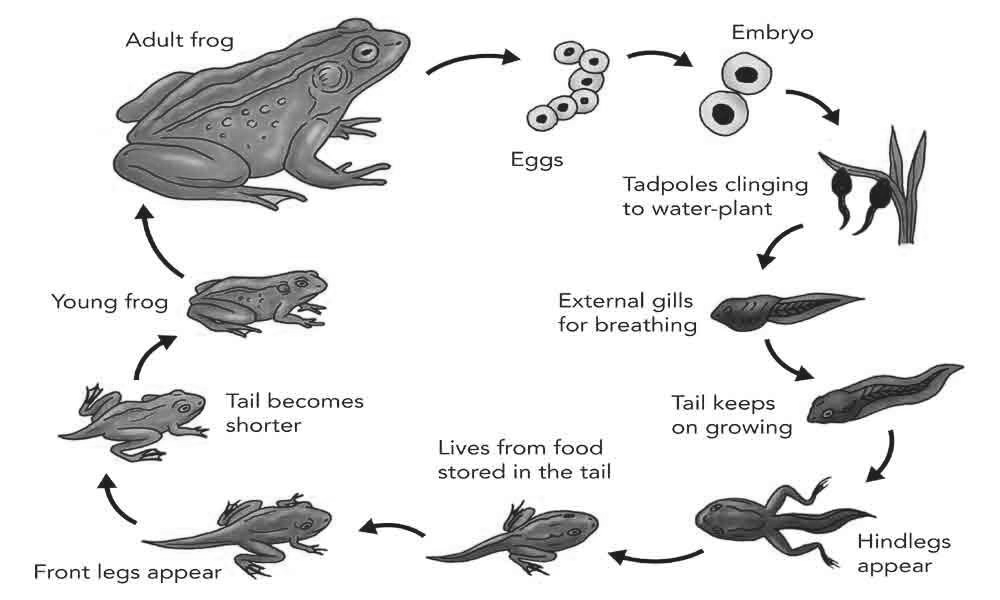Natural Process Diagrams: The Life-cycle of Frogs
WRITING TASK 1
You should spend 20 minutes on this task.
The diagram gives information about the life cycle of a frog.
Summarize the information by selecting and reporting the main features, and make comparisons where relevant.
Write at least 150 words.

The process demonstrates how a frog’s development takes place over time.
Overall, the diagram outlines a sequence of natural developments that ensure the survival of frogs through metamorphosis.
Initially, the cycle starts with an adult frog laying eggs in water. These eggs develop into embryos, which then hatch into tadpoles. The tadpoles cling to water plants and develop external gills for breathing. Following this, their tail keep beacoming longer, followed by the appearance of hindlegs. At this stage, they survive by consuming nutrients stored in their tail.
As the front legs begin to grow, the color of the body gradually changes from black to green. In the next stage, the tails become shorter until it disappeares, marking the transformation into young frog. Eventually, the young frog becomes a fully grown adult, now completely green in color. The entire cycle then repeats itself





Responses
Here you can provide helpful feedback, advice, and compliments about this report.
We suggest that you consider the following questions in your response...
Task Achievement
- Did the student summarize the diagram in the introduction?
- Did the student describe the key features of the stages?
- Did the student compare the stages if appropriate?
- Did the student describe the purpose or result or a stage?
- Did the student describe any items being used?
Coherence and Cohesion- Did the student use paragraphs and were the paragraphs logically ordered?
- Did each paragraph have a clear purpose?
- Did the student use a variety of linking language?
Grammatical Range and Accuracy- Did the student use appropriate tenses, clauses, and other structures?
- Were there any mistakes in the structures?
- Was there a variety of structures?
Lexical Resource